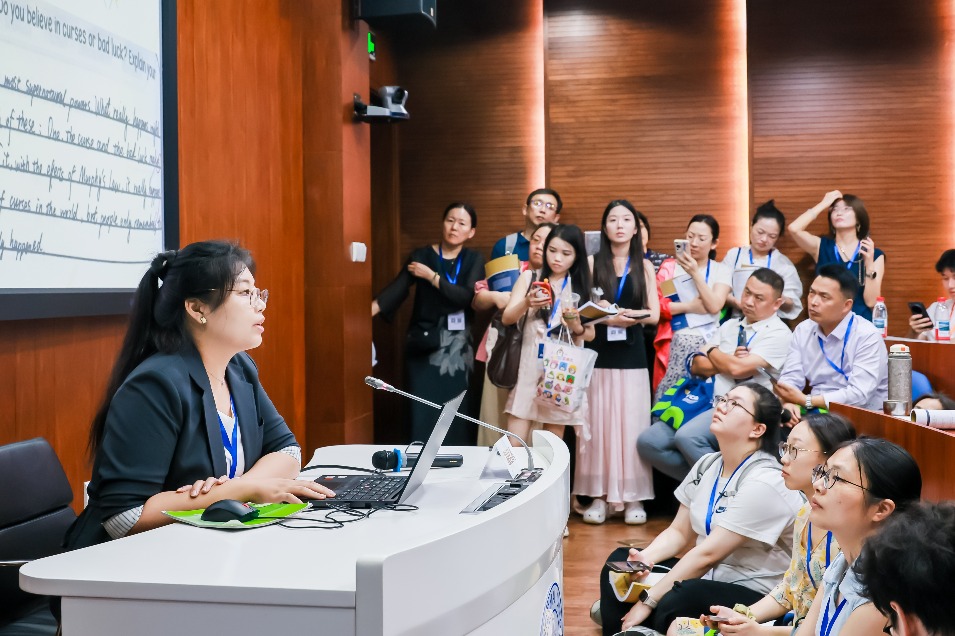What's on

Ming style

Ming-style furniture, named after its popularity in the Ming Dynasty (1368-1644), is known for the simple, elegant designs that embody ancient Chinese people's takes on everyday life, social etiquette and the relationship between people and the universe. The style inherited Song Dynasty (960-1279) aesthetics that prioritized simplicity over sophistication, and developed especially thanks to its promotion by intellectuals who oversaw the design. A long-term exhibition now running at the Tsinghua University Art Museum in Beijing has selected from its collection dozens of fine examples of Ming-style furniture. The style evolved in the Qing Dynasty (1644-1911), and is favored by collectors nowadays. The trend of appreciating and buying such furniture over recent decades is due to the efforts of late art connoisseur Wang Shixiang. His research, catalogs and publications of the subject have influenced lovers of classic Chinese furniture at home and abroad. Objects on show are of various forms, functions and materials.
9 am-5 pm, closed on Mondays. Tsinghua University, Haidian district. 010-6278-1012.
Gold Splendor

Decorating houses with intricate woodcarving, many derived from architectural structures, used to be a tradition in Guangdong province. Often coated with a thin layer of gold, the glittering articles present a variety of dazzling techniques of sculpting and cutting. And they bear complicated patterns and motifs to include folktales, customs, historic figures, mythological characters and other highly decorated themes with auspicious wishes and good lives. Splendor of Gold and Wood, an exhibition now on at Shenzhen Museum, Guangdong province, celebrates this craft and underlying local cultural implications. It shows three popular styles: People in Guangzhou and neighboring areas opted for a symmetrical composition and a sense of majesty and rhythm; in Chaoshan region, craftsmen carved multiple layers out of wood to add intricacy in arrangement and the works normally tell stories of a long duration; and the Hakka people favored simple, bold and clear-cut lines to deliver a down-to-earth feeling. The exhibition runs through to Oct 8.
10 am-6 pm, closed on Mondays. 6 Tongxin Lu, Futian district, Shenzhen, Guangdong province.0755-8813-2247.
Cultural traces

Lei Bo, an eminent member of the Beijing Fine Art Academy, has been accomplished in the mountain-and-water genre of classic Chinese painting. He sought breakthroughs by venturing into oil painting and explored various forms of the East and the West. Traces, an ongoing exhibition at the Guangxi Academy of Chinese Painting and Calligraphy in Nanning, Guangxi Zhuang autonomous region, shows Lei's efforts over recent years. In his work, Lei incorporates the techniques and styles of ancient mural paintings, which were found in caves in Dunhuang, Gansu province, and the Xinjiang Uygur autonomous region and in centuries-old tombs in Shanxi province. His works also reflect a study of the long-standing European art traditions, the fresco paintings and paintings done in tempera, in which a colloidal medium such as egg yolk is used. This cross-cultural influence has rendered Lei's work a unique texture, through which he seeks alternative presentations of the serene atmosphere in classic Chinese paintings. Many paintings on show were created while Lei returned to Guangxi, his native region, years ago and stayed for over three years. The depictions in his work are reminiscent of the easy pace of towns and villages. The exhibition runs through to July 25.
9 am-5 pm, closed on Mondays. 10 Mingyue West Road, Liangqing district, Nanning, Guangxi Zhuang autonomous region.
Diverse wildlife

The grand natural scenery, with varieties of wildlife and plants, is given a vivid representation in the works of four photographers from Norway, Sweden, Denmark and China, whose snapshots are now on show at Born to be Wild, a long-term exhibition celebrating biodiversity at the Danish Cultural Center in Beijing's 798 art district. Also, it is to warn viewers of the situation of endangered species and the deterioration of biodiversity as a major challenge to all living things, including people. The exhibition has toured Kunming, Yunnan province, Chongqing, Haikou, Hainan province, Xiamen, Fujian province, and Guangzhou, Guangdong province.
11 am-5:30 pm, closed on Monday. 706 Bei Yi Street, 798 art district, Chaoyang district, Beijing.
China Daily
Today's Top News
- China to offer nationwide childcare subsidies
- Low-altitude economy ready for takeoff
- US, EU seal trade deal amid concerns over tariff imbalance
- Trump meets EU chief ahead of deal deadline
- Greece, Turkiye battle wildfires
- China, US gear up for pivotal trade talks






























